Pateros has eluded me for a long time. Despite having travelled to almost all the provinces in the Philippines, I have never set foot in Pateros until recently.
Being the only non-city among the Metro Manila cities, Pateros has retained its small town charm and its people are warm and friendly.
Saint Martha
My friends and I experienced this genuine hospitality when we were invited to a town fiesta by Bong Quiogue, a dedicated teacher and an artist who painted a mural at their beautiful San Roque Church. He, together with the Poderes de Sta. Marta, is a devotee of Sta. Marta.
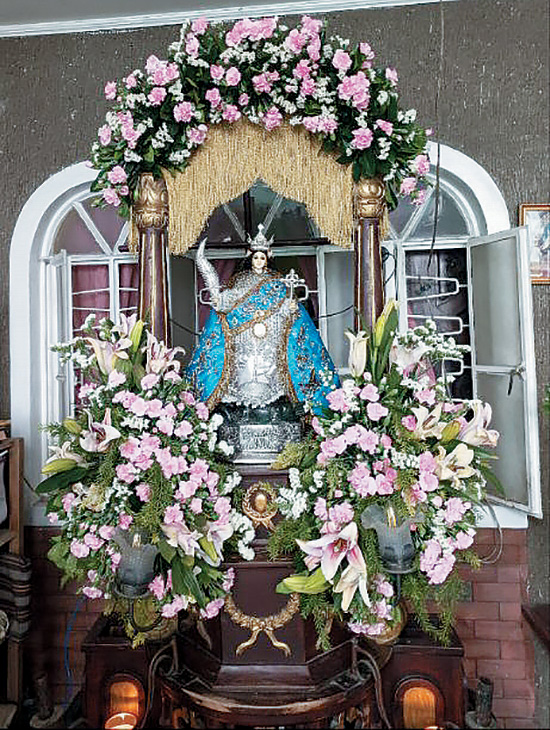
The traditional story recounts that Saint Martha was invoked by the people of Pateros to vanquish a giant crocodile which had been eating their ducks. These animals were the main source of livelihood in producing balut, or ducks egg. Thereafter, the balut industry flourished and the miracle was attributed to Saint Martha.

As a tribute to this miracle, the people of Pateros held a grand fluvial procession. In 2008, San Roque Church in Pateros was declared a diocesan shrine in honor of Saint Martha. This church started as a visita of Pasig in 1572 and visita of Taguig in 1742. It was founded in 1815 after Pateros separated from Pasig. Emilio Aguinaldo used the convent as temporary headquarters. During WWII, many Filipino civilians were killed inside the church.

Town Fiesta
We were taught how to open itlog na maalat with the handle of a spoon and how to eat balut, mess-free! But for a sweet tooth guy like me, the best part was the dessert called “inutak.” Made with galapong and ube, it is perfectly paired with ice cream resulting in double delight!
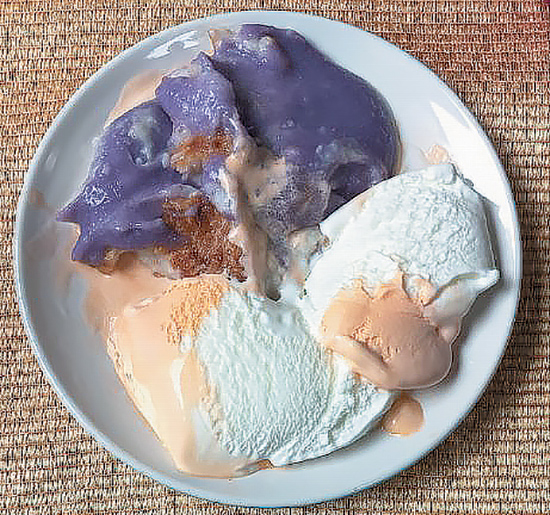
Inutak with ice cream 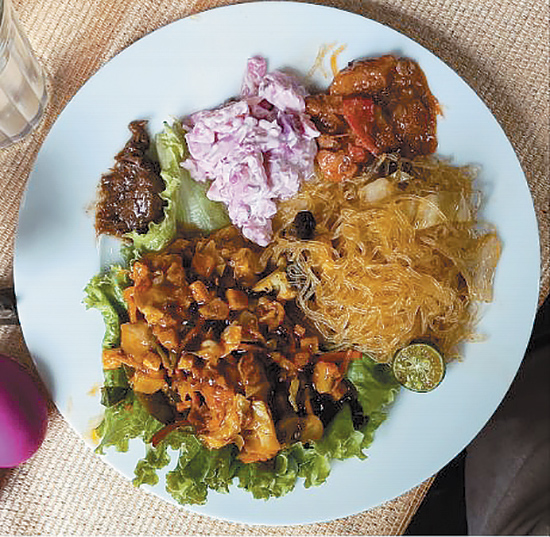
Balut, Alpombra
Pateros is a first class municipality with a small population and land area. However, it is the second most densely-populated in Metro Manila. It is bordered by Pasig to the north, Makati/Taguig to the west and Taguig to the south. It used to be a barrio of Pasig.
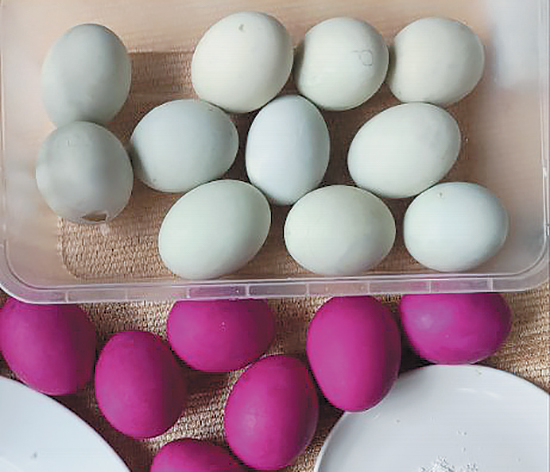
Balut and itlog na maalat 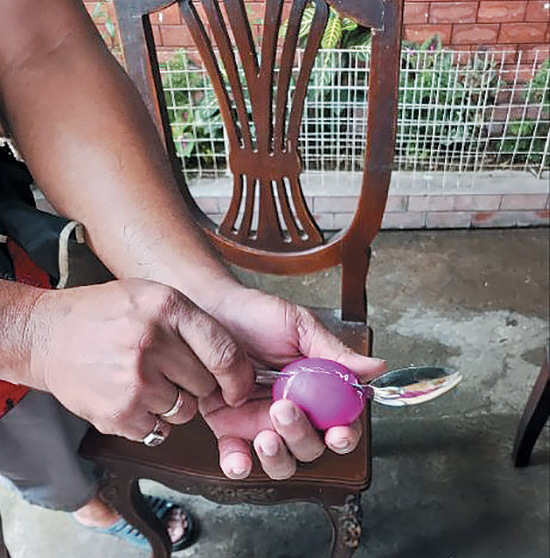
It was named Pateros which means duck raisers, though an unpopular theory states that it was named after “sapateros” or shoemakers in English. Unfortunately, Pateros does not produce balut anymore due to the pollution of Pateros River which is connected to Pasig River. Currently, the balut sold in Pateros come from nearby provinces such as Laguna.

With regards shoemaking, the only remnant would be the “alpombras.” Alfombra means carpet in Spanish. These carpeted slippers represent Pateros as much as balut does. I have yet to buy one but I heard they are interchangeable, meaning no right or left slippers. I was also told that sabungeros preferred the signature red alpombras. New designs have evolved such as “tirintas” and “buhol” but the intricately-designed colorful ladies› alfombra are still the best sellers.
Fear Factor
A visit to Pateros is not complete without balut. Balut has been featured in the TV reality show Fear Factor where contestants were made to eat balut. But what do you do with rotten balut? Make them into an omelette called bibingkang abnoy! This may be revolting for some people but the people of Pateros eat it with gusto.
For the less adventurous with their palates, there’s “itik” (native mallard). There were many choices: adobong itik, lutong itik sa papaya at tahure, and kalderetang itik sa pickles. I chose the latter one.
Ancestral Houses, Monuments
Walking around Pateros along M. Almeda St., I saw several old houses. One of the oldest is called Bahay ni Maestrang Tayang. This blue house is also called Concio House and was built between 1907 and 1908.

The famous son of the owners is Cesar Concio Sr., the first university architect of the University of the Philippines. He designed several buildings at UP Diliman and was dean of the College of Architecture. He is also the father-in-law of actress/TV executive Charo Santos-Concio. It is open to the public on Holy Thursday during the “Pabasa ng Pasyon.”
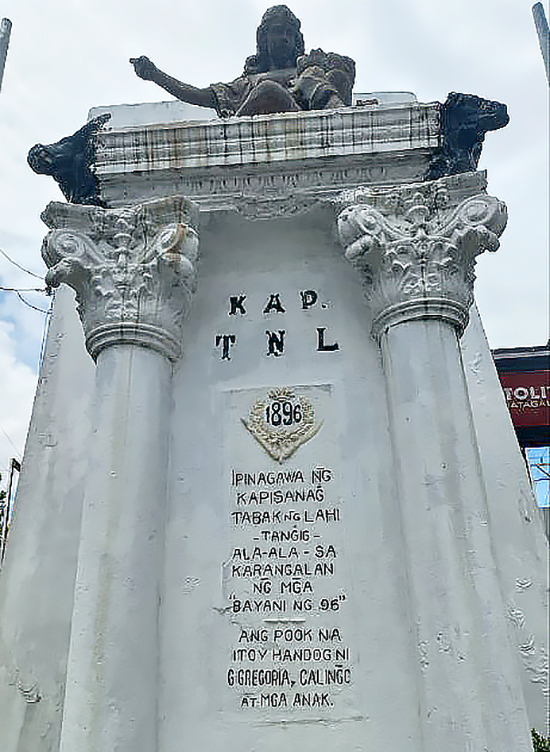
Also, along M. Almeda St. is a monument to the Heroes of 1896. Macario Almeda, commander of Magtanggol, KKK Pateros chapter, and Marcos Lozada, secretary, were executed in this spot. They were among the heroes of the Philippine Revolution. Present day heroes, the late poet-warrior Eman Lacaba and his brother screenwriter/writer Pete lived in Pateros which was their mother’s hometown.
Pateros may have eluded me at first but I will definitely come back not only because of balut and inutak but also because of its people.
* * *
JP Ordoña (Manilakad) leads Manilakad Walks in Intramuros, Binondo, Quiapo and more. In between, he writes, climbs, dives and more. Let him guide you to several walking destinations in Manila. Manilakad (JP Ordoña) can be reached on Facebook Messenger or through text at 0916-3597888.
